Abstract
The rates of transpiration from the upper and lower surfaces of leaves of Gossypium hirsutum, Xanthium strumarium, and Zea mays were compared with the rates at which helium diffused across those leaves. There was no evidence for effects of CO2 concentration or rate of evaporation on the resistance to water loss from the evaporating surface (“resistance of the mesophyll wall to transpiration”) and no evidence for any significant wall resistance in turgid tissues. The possible existence of a wall resistance was also tested in leaves of Commelina communis and Tulipa gesneriana whose epidermis could be easily peeled. Only when an epidermis was removed from a leaf, evaporation from the mesophyll tissue declined. We conclude that under conditions relevant to studies of stomatal behavior, the water vapor pressure at the sites of evaporation is equal to the saturation vapor pressure.
Full text
PDF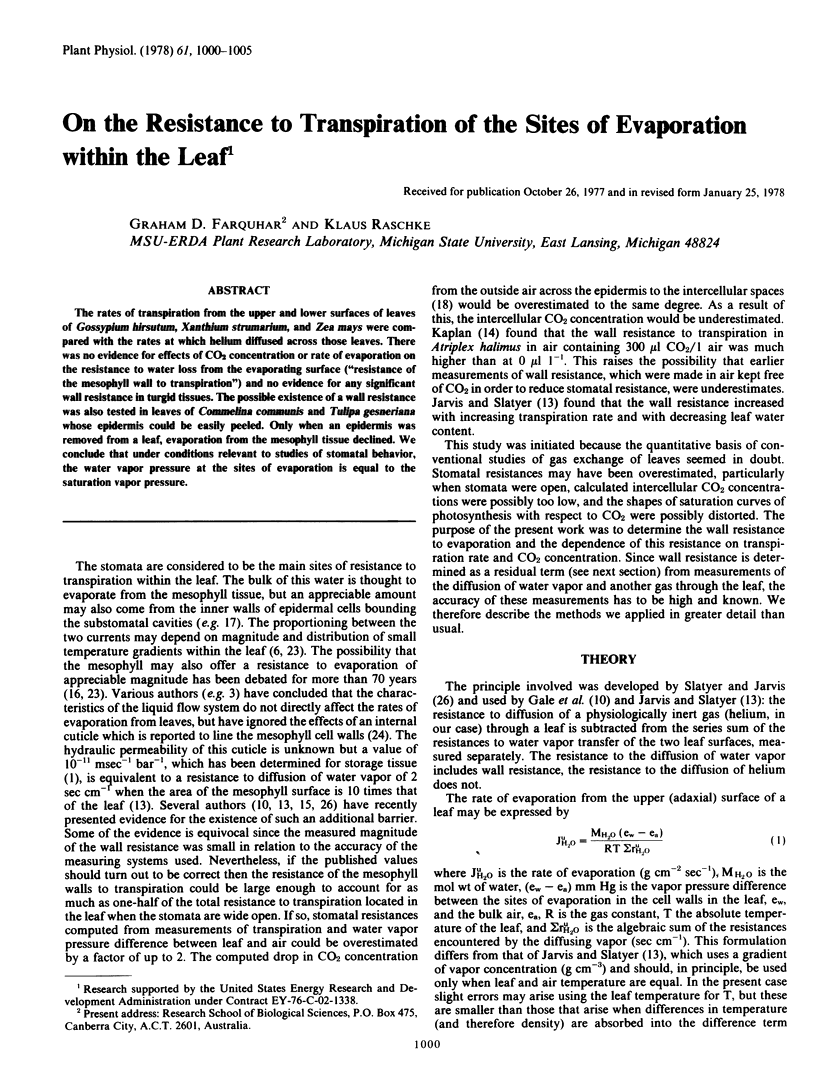
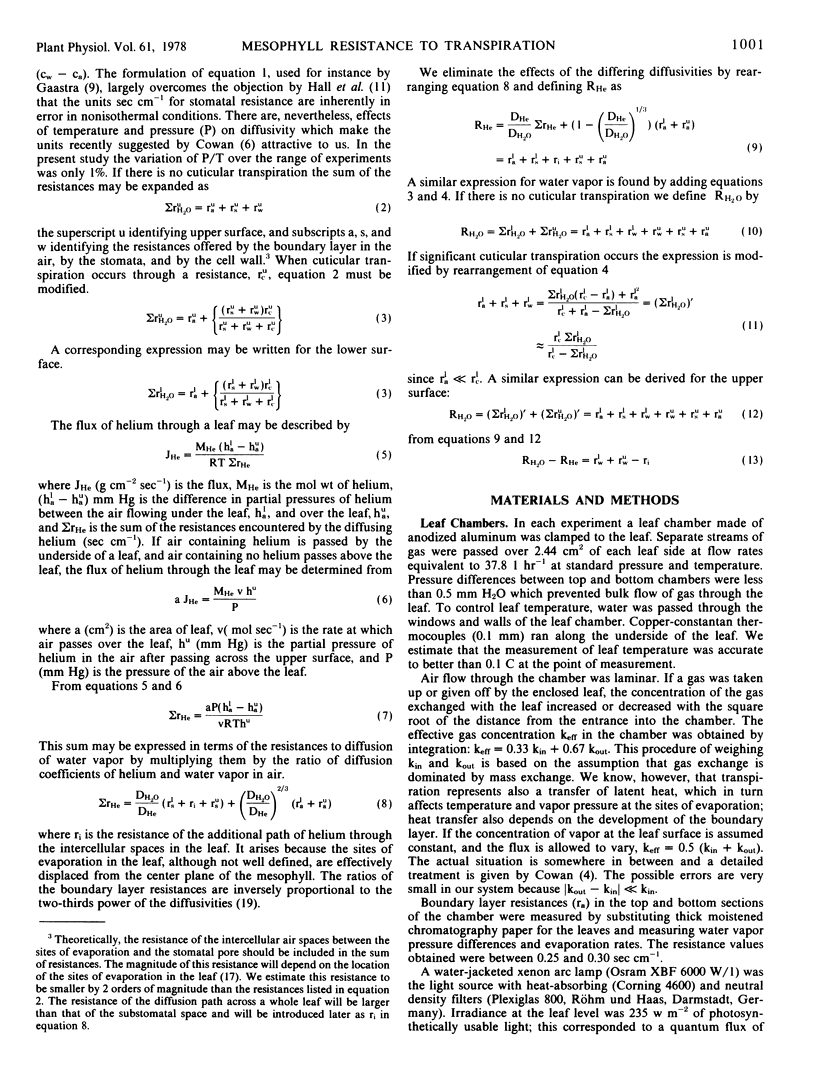
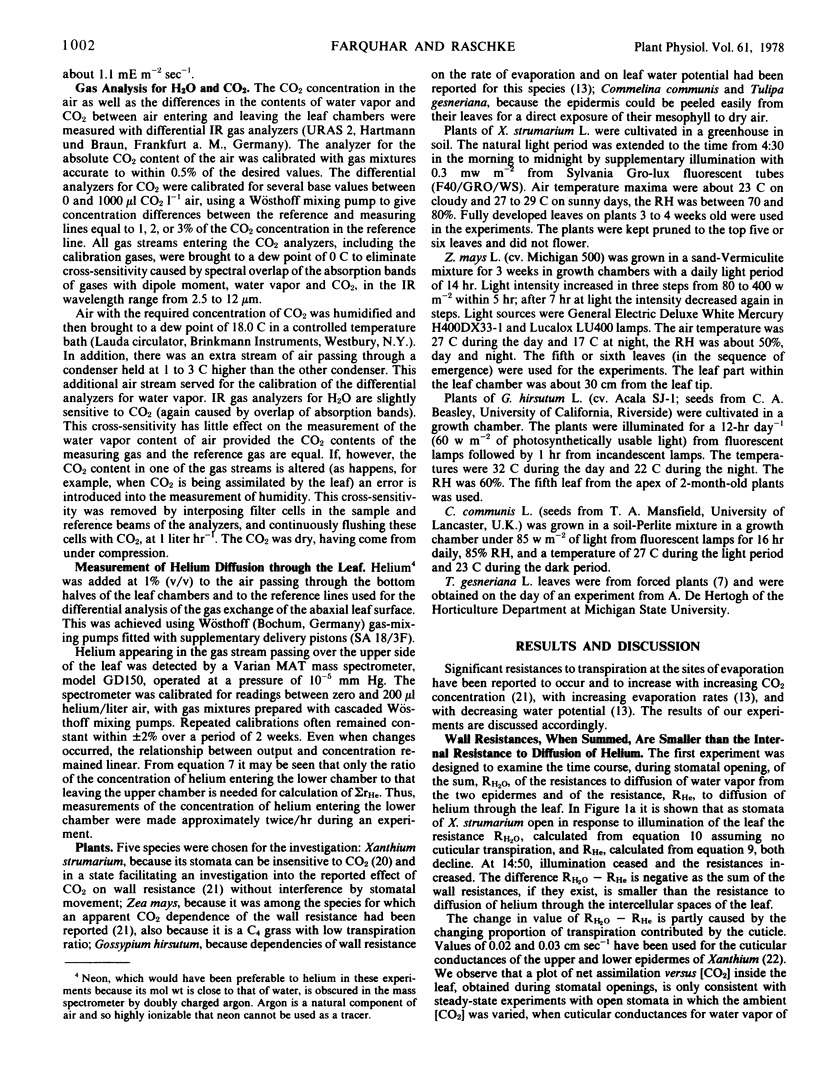
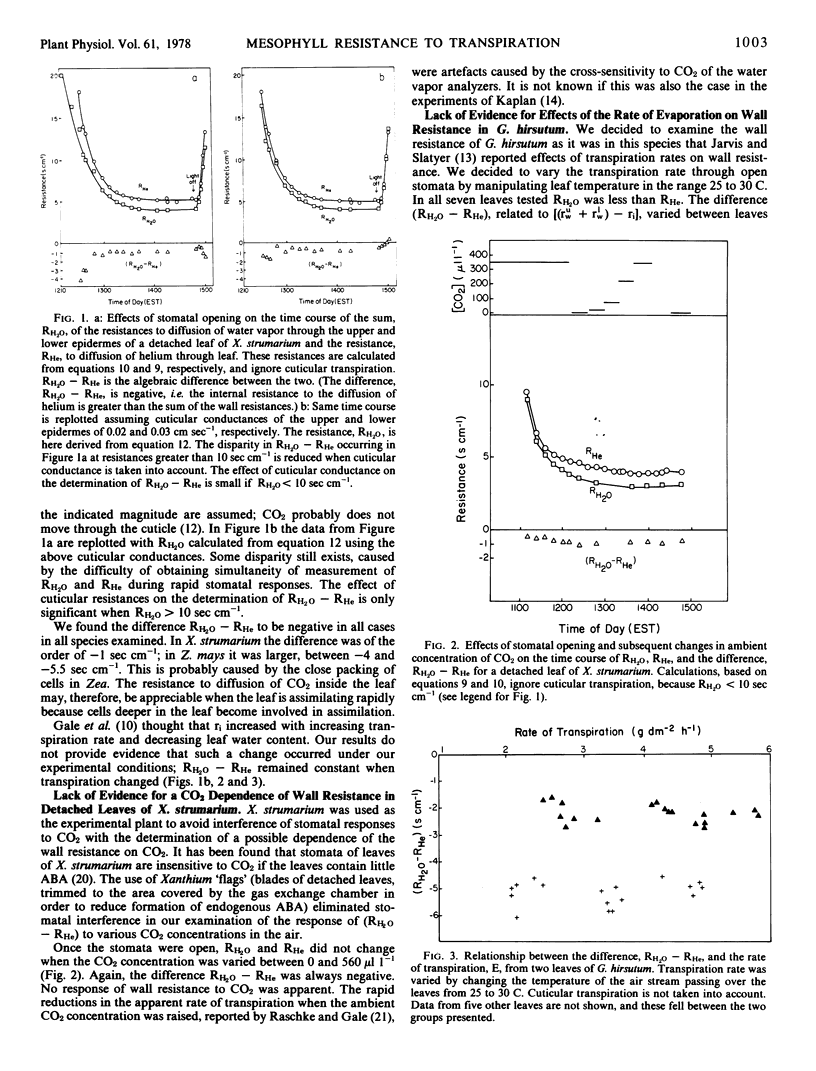
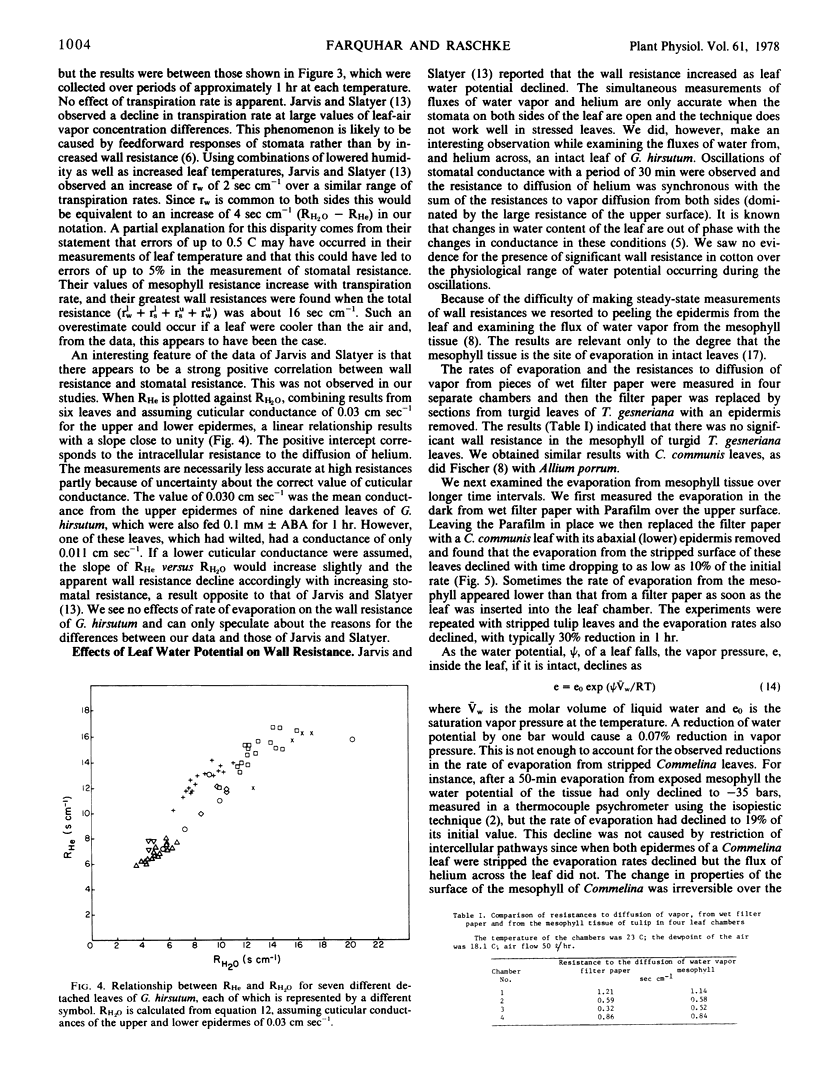
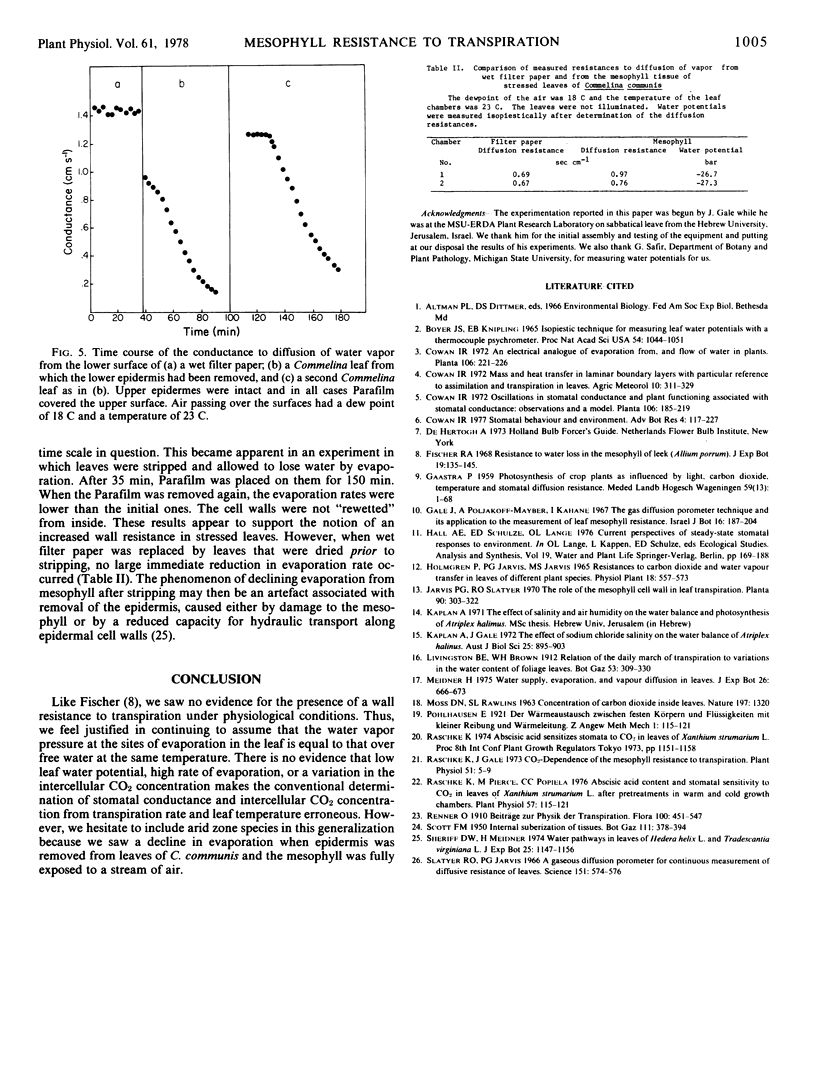
Selected References
These references are in PubMed. This may not be the complete list of references from this article.
- Raschke K., Pierce M., Popiela C. C. Abscisic Acid Content and Stomatal Sensitivity to CO(2) in Leaves of Xanthium strumarium L. after Pretreatments in Warm and Cold Growth Chambers. Plant Physiol. 1976 Jan;57(1):115–121. doi: 10.1104/pp.57.1.115. [DOI] [PMC free article] [PubMed] [Google Scholar]
- Slatyer R. O., Jarvis P. G. Gaseous-diffusion porometer for continuous measurement of diffusive resistance of leaves. Science. 1966 Feb 4;151(3710):574–576. doi: 10.1126/science.151.3710.574. [DOI] [PubMed] [Google Scholar]
- Twente J. W., Twente J. A. Regulation of hibernating periods by temperature. Proc Natl Acad Sci U S A. 1965 Oct;54(4):1044–1051. [PMC free article] [PubMed] [Google Scholar]


